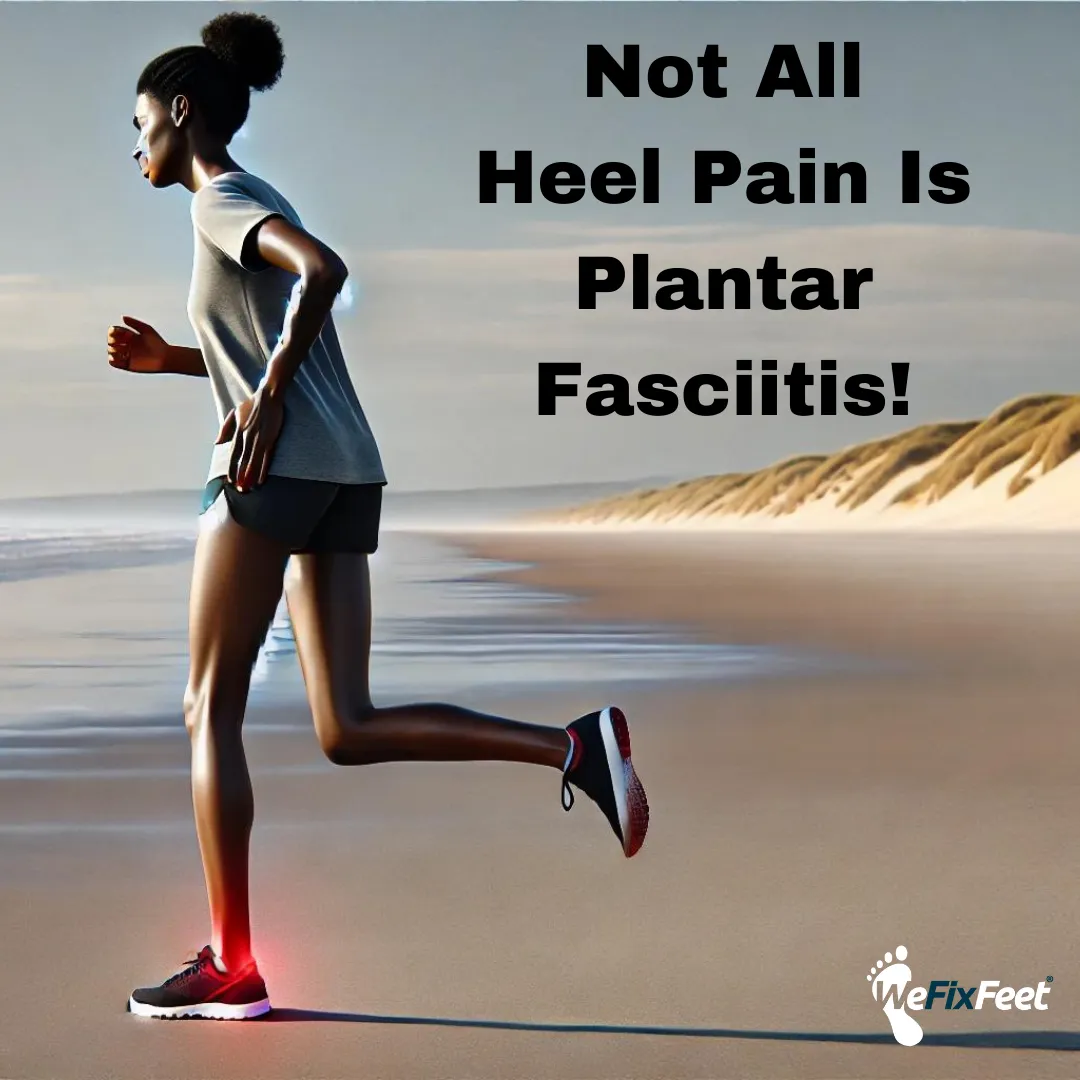
Understanding Tarsal Tunnel Syndrome, Heel Bursitis, and Heel Pad Syndrome: Causes, Symptoms, and Treatments

Understanding Tarsal Tunnel Syndrome, Heel Bursitis, and Heel Pad Syndrome: Causes, Symptoms, and Treatments
Heel pain can significantly affect your daily life, making even simple tasks like walking or standing uncomfortable. While plantar fasciitis is a common cause of heel pain, other conditions like tarsal tunnel syndrome, heel bursitis, and heel pad syndrome can also lead to discomfort. Understanding these conditions, their symptoms, and available treatments can help you manage and alleviate your pain effectively.
Tarsal Tunnel Syndrome
Tarsal tunnel syndrome is a condition caused by the compression of the posterior tibial nerve as it passes through the tarsal tunnel, a narrow space on the inside of the ankle. This nerve compression can lead to pain, tingling, and numbness in the foot.
Symptoms:
Tingling or burning sensation in the sole of the foot
Numbness in the foot and toes
Sharp, shooting pains in the foot
Symptoms that worsen with prolonged standing or walking
Causes:
Anatomical abnormalities such as flat feet, which can stretch the tibial nerve
Trauma to the ankle that causes swelling or inflammation
Systemic diseases such as diabetes, which can predispose nerves to compression
Varicose veins, ganglion cysts, or lipomas in the tarsal tunnel
Treatment:
Rest and Ice: Reducing activity and applying ice can help alleviate pain and swelling.
Orthotics: Custom orthotics can help correct foot alignment and reduce nerve pressure.
Physical Therapy: Exercises to strengthen and stretch the foot and ankle muscles can provide relief.
Medications: Non-steroidal anti-inflammatory drugs (NSAIDs) can reduce inflammation and pain.
Surgery: In severe cases, surgical intervention may be necessary to release the compressed nerve.
Heel Bursitis
Heel bursitis occurs when the bursa, a small fluid-filled sac that cushions the heel bone, becomes inflamed. This condition can cause pain at the back or bottom of the heel and is often confused with plantar fasciitis.
Symptoms:
Pain and tenderness at the back of the heel
Swelling and redness in the affected area
Increased pain with pressure on the heel or after prolonged activity
Causes:
Overuse or repetitive stress from activities such as running or jumping
Wearing poorly fitting shoes that place excessive pressure on the heel
Direct trauma to the heel
Underlying conditions such as rheumatoid arthritis or gout
Treatment:
Rest and Ice: Resting the affected foot and applying ice can help reduce inflammation.
Proper Footwear: Wearing shoes that provide good support and cushioning can prevent further irritation.
Heel Pads: Using heel pads or cushions can alleviate pressure on the inflamed bursa.
Medications: NSAIDs can help manage pain and inflammation.
Physical Therapy: Stretching and strengthening exercises for the foot and calf muscles can aid recovery.
Corticosteroid Injections: In some cases, corticosteroid injections may be administered to reduce severe inflammation.
Heel Pad Syndrome
Heel pad syndrome is a condition where the protective fat pad under the heel bone becomes thin or damaged, leading to pain when standing or walking. This syndrome is often caused by repeated stress or trauma to the heel.
Symptoms:
Deep, bruise-like pain in the centre of the heel pad
Increased pain with prolonged standing or walking
Pain that worsens when walking barefoot on hard surfaces
Causes:
Age-related thinning of the heel pad
Repetitive impact activities such as running or jumping
Wearing shoes with inadequate cushioning
Obesity, which increases pressure on the heel
Treatment:
Rest: Limiting activities that aggravate the pain can help the heel pad recover.
Ice: Applying ice to the affected area can reduce inflammation and numb pain.
Cushioned Footwear: Wearing shoes with good cushioning and shock absorption can protect the heel pad.
Heel Cups or Pads: Using heel cups or pads in shoes can provide additional cushioning and support.
Weight Management: Maintaining a healthy weight can reduce pressure on the heel.
Physical Therapy: Exercises to strengthen the foot and improve biomechanics can help prevent further damage.
Heel pain can be caused by a variety of conditions, including tarsal tunnel syndrome, heel bursitis, and

heel pad syndrome. Each condition requires a specific approach to treatment, but the goals are the same: to reduce pain, improve function, and prevent further injury. If you experience persistent heel pain, consulting with a podiatrist can provide a proper diagnosis and tailored treatment plan to help you find relief.
If you're struggling with heel pain and need professional advice, contact We Fix Feet for a comprehensive evaluation and tailored treatment options. Book an appointment online or call our team at 0115 9328832 to start your journey towards pain-free living.
Ask The We Fix Feet Team
Fill in the form to request a Call From Our Team
One of our team will call you for FREE and answer any questions or concerns you may have about your uncomfortable foot condition

Where To Find We Fix Feet
Our We Fix Feet podiatry clinics are conveniently located in Ilkeston, Derbyshire and Beeston, Nottinghamshire
Open: Mon-Fri 09:00-17:00 / Sat 09:00-13:00
94 Bath Street, Ilkeston, Derbyshire DE7 8FE
8 Wollaton Road, Beeston, Nottinghamshire NG9 2NR
Pay and display parking nearby




